
The Sacred Trails of Kumano Kodo
Explore the ancient pilgrimage routes of Kumano Kodo, where nature and spirituality converge in the heart of Japan's Kii Peninsula.
Nestled in the lush mountains of the Kii Peninsula, Kumano Kodo is a network of ancient pilgrimage routes that have been used for over a thousand years. These trails lead to the revered Kumano Sanzan shrines: Kumano Hongu Taisha, Kumano Nachi Taisha, and Kumano Hayatama Taisha. Walking these paths offers visitors a unique opportunity to connect with Japan’s spiritual heritage and natural beauty. The trails weave through dense forests, past rushing rivers, and over steep mountain passes, providing breathtaking vistas and encounters with local wildlife. Along the way, you will find numerous Oji shrines, small waypoints where pilgrims have traditionally stopped to pray. The paths are well-marked and range in difficulty, making them accessible for both seasoned hikers and casual walkers. The experience of walking the Kumano Kodo is both meditative and invigorating. Each step brings you closer to the heart of Japan’s spiritual traditions and offers a peaceful retreat from the hustle and bustle of modern life. Many visitors combine their trek with stays in traditional ryokan inns, where they can enjoy local cuisine and relax in hot spring baths. Whether you are seeking adventure, reflection, or simply a beautiful escape, Kumano Kodo welcomes you to explore its sacred trails.
Local tips in Kumano Kodo
- Wear comfortable hiking shoes, as the trails can be uneven and steep in places.
- Carry a raincoat or poncho, as the weather in the mountains can be unpredictable.
- Stay hydrated and bring snacks, especially if you plan on hiking longer sections of the trail.
- Respect local customs and traditions, particularly when visiting shrines and other sacred sites.
- Consider staying in a traditional ryokan to enhance your cultural experience.
- Check the trail conditions and weather forecast before setting out to ensure a safe journey.
The Sacred Trails of Kumano Kodo
Nestled in the lush mountains of the Kii Peninsula, Kumano Kodo is a network of ancient pilgrimage routes that have been used for over a thousand years. These trails lead to the revered Kumano Sanzan shrines: Kumano Hongu Taisha, Kumano Nachi Taisha, and Kumano Hayatama Taisha. Walking these paths offers visitors a unique opportunity to connect with Japan’s spiritual heritage and natural beauty. The trails weave through dense forests, past rushing rivers, and over steep mountain passes, providing breathtaking vistas and encounters with local wildlife. Along the way, you will find numerous Oji shrines, small waypoints where pilgrims have traditionally stopped to pray. The paths are well-marked and range in difficulty, making them accessible for both seasoned hikers and casual walkers. The experience of walking the Kumano Kodo is both meditative and invigorating. Each step brings you closer to the heart of Japan’s spiritual traditions and offers a peaceful retreat from the hustle and bustle of modern life. Many visitors combine their trek with stays in traditional ryokan inns, where they can enjoy local cuisine and relax in hot spring baths. Whether you are seeking adventure, reflection, or simply a beautiful escape, Kumano Kodo welcomes you to explore its sacred trails.
When is the best time to go to Kumano Kodo?
Iconic landmarks you can’t miss
Nachi Waterfall
Experience the awe of Nachi Waterfall, a sacred site and stunning natural wonder in Wakayama, Japan, blending spirituality with breathtaking landscapes.

Kumano Hongu Taisha
Experience the tranquility and spiritual heritage of Kumano Hongu Taisha, a premier Shinto shrine in Wakayama, Japan, amidst stunning natural landscapes.
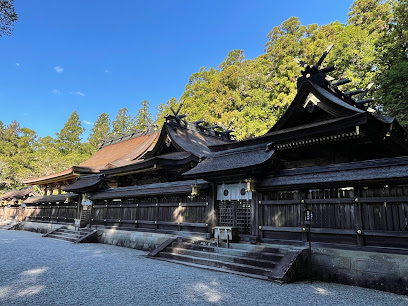
Kumano-Nachi Taisha
Discover the spiritual essence of Japan at Kumano-Nachi Taisha, a UNESCO World Heritage shrine surrounded by breathtaking nature and rich history.
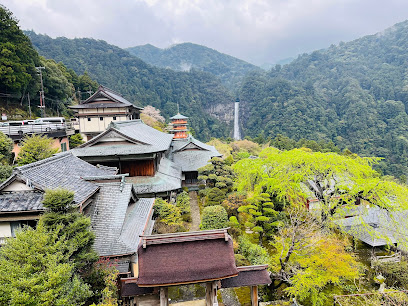
National Natural Monument Onigajō Cliff.
Discover the breathtaking beauty of Onigajō Cliff, a National Natural Monument in Kumano, Mie, where nature and adventure await.

Daimon Gate
Explore the stunning Daimon Gate, a majestic Buddhist temple entrance in Koyasan, Japan, and experience the tranquility of this spiritual destination.

Oyunohara
Discover Oyunohara, a sacred Shinto shrine in Wakayama, Japan, where spirituality meets stunning natural beauty along the Kumano pilgrimage routes.
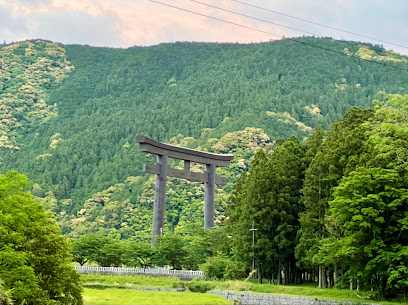
Akagi Castle Ruins
Explore the historical Akagi Castle Ruins in Kumano, where history meets stunning natural landscapes, offering a unique glimpse into Japan's feudal past.

Tsubo-yu
Discover the tranquility of Tsubo-yu, a historic onsen in Wakayama renowned for its healing waters and serene atmosphere, perfect for relaxation.
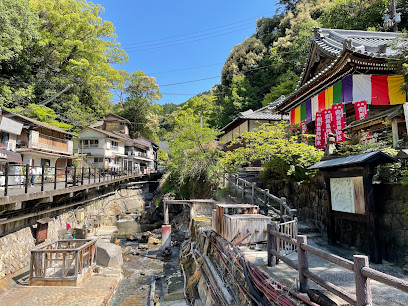
丸山千枚田
Discover the breathtaking Maruyama Senmaida Rice Terraces, a serene blend of nature and culture in Kumano, Japan.
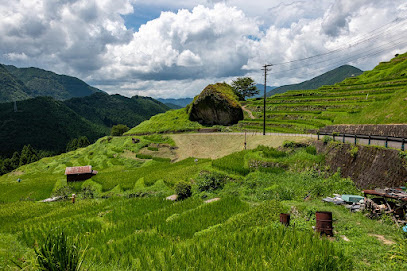
Fudarakusan-ji
Explore Fudarakusan-ji, a tranquil Buddhist temple in Wakayama, where serenity meets history amidst beautiful gardens and spiritual traditions.
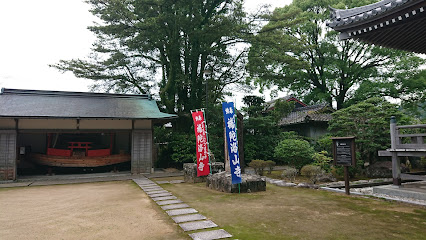
Nyonin-do Hall
Discover the spiritual essence of Koyasan at Nyonin-do Hall, a tranquil Buddhist temple welcoming visitors to explore its serene beauty and rich traditions.

Yoshino Kumano National Park
Explore the breathtaking beauty and rich heritage of Yoshino Kumano National Park, a serene escape in Japan's lush landscapes and ancient trails.
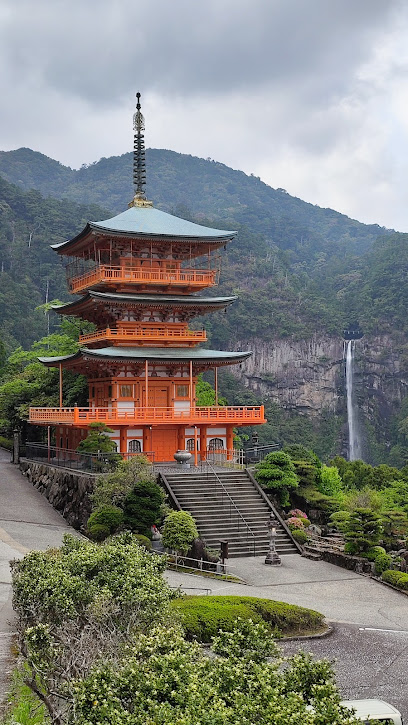
Kumano Kodo - Nakahechi Daimon-saka Pilgrim Route
Explore the scenic Kumano Kodo - Nakahechi Daimon-saka Pilgrim Route, a UNESCO World Heritage site rich in Japanese spirituality and natural beauty.
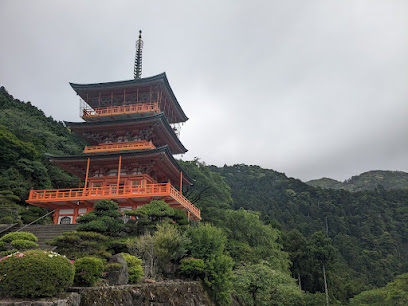
Kumano Kodo Information Center
Explore the Kumano Kodo Information Center and uncover the rich history of Japan's sacred pilgrimage routes in Wakayama.
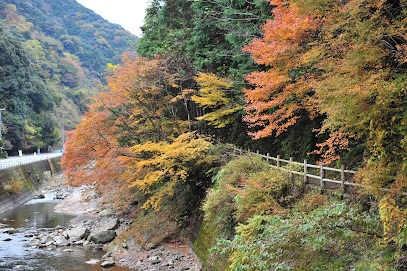
Koguchi shizen-no-ie
Experience the serenity of Koguchi Shizen-no-Ie, a traditional Japanese inn nestled in the heart of Wakayama, ideal for nature lovers and trekkers.
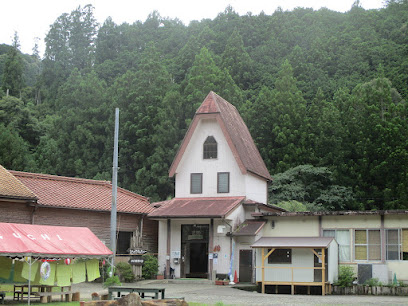
Unmissable attractions to see
Nachi Waterfall
Experience the breathtaking beauty and spiritual significance of Nachi Waterfall, one of Japan's tallest and most revered natural wonders.

Kumano Hongu Taisha
Discover the spiritual heart of Japan at Kumano Hongu Taisha, a historic Shinto shrine surrounded by nature's beauty and rich cultural heritage.

Kumano-Nachi Taisha
Explore the spiritual heart of Japan at Kumano-Nachi Taisha, a stunning Shinto shrine surrounded by breathtaking nature and rich cultural heritage.
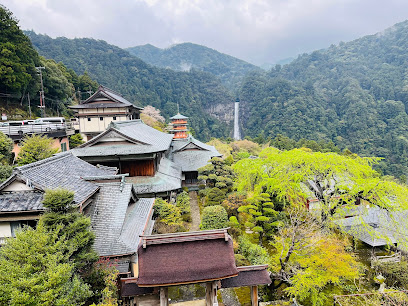
Kumano Hayatama Taisha
Discover the spiritual heart of Japan at Kumano Hayatama Taisha, a revered Shinto shrine rich in history and surrounded by breathtaking nature.
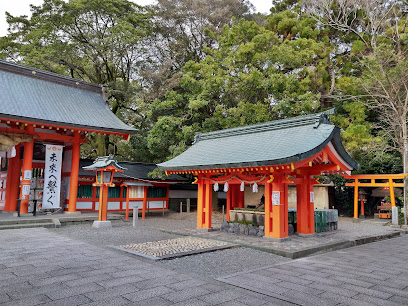
Yanmar Stadium Nagai
Experience the exhilarating atmosphere of Yanmar Stadium Nagai, a premier sports venue in Osaka surrounded by beautiful parklands.

National Natural Monument Onigajō Cliff.
Discover the breathtaking beauty of Onigajō Cliff, a National Natural Monument in Kumano, Mie, showcasing stunning ocean views and rich biodiversity.

Daisen Park
Explore the beauty of Daisen Park in Sakai, where nature meets history in a serene setting perfect for relaxation and exploration.
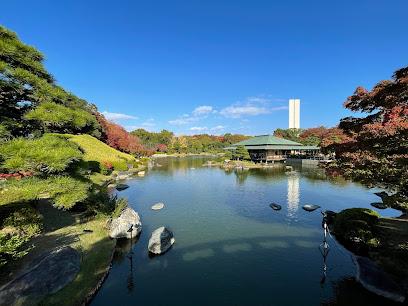
Kimii-dera
Experience the serenity and beauty of Kimii-dera, a historic Buddhist temple in Wakayama, offering breathtaking views and rich cultural heritage.
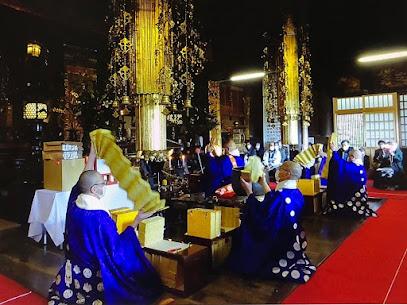
Road Station Misaki
Discover the flavors and scenic beauty of Osaka at Road Station Misaki, your perfect rest stop for culinary delights and breathtaking views.

Kamikura Shrine
Discover the serene beauty and spiritual significance of Kamikura Shrine, a historic Shinto site nestled in the natural landscapes of Wakayama, Japan.
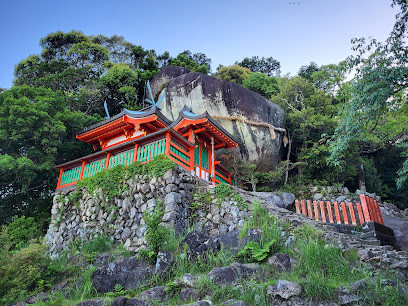
teamLab Botanical Garden Osaka
Explore the mesmerizing fusion of digital art and nature at teamLab Botanical Garden Osaka, a unique attraction for art lovers and nature enthusiasts alike.
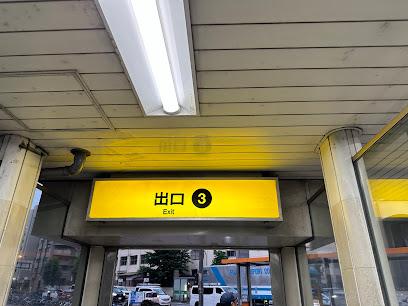
Oyunohara
Discover Oyunohara, a sacred Shinto shrine in Wakayama, Japan, and the starting point of the historic Kumano Kodo pilgrimage routes.

Janjan-Yokocho (Nanyo-dori Shopping Street)
Explore the lively Janjan-Yokocho shopping street in Osaka, where local flavors and unique finds await every traveler.

Seiganto-ji
Discover the spiritual haven of Seiganto-ji, a stunning Buddhist temple in Wakayama, renowned for its breathtaking views and rich cultural heritage.

Sakai City Museum
Explore Sakai City Museum: A Journey Through Time in Osaka's Rich Cultural Heritage

Essential places to dine
National Natural Monument Onigajō Cliff.
Discover breathtaking views and rich biodiversity at Japan's National Natural Monument Onigajō Cliff in Mie Prefecture.
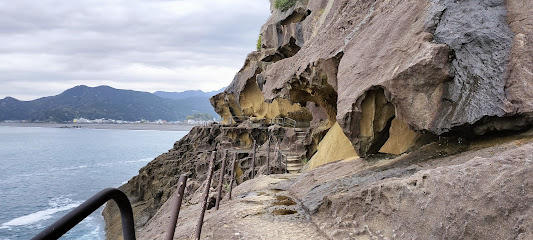
Takehara
Experience authentic Japanese seafood in Takehara – where fresh ingredients meet exquisite culinary craftsmanship.
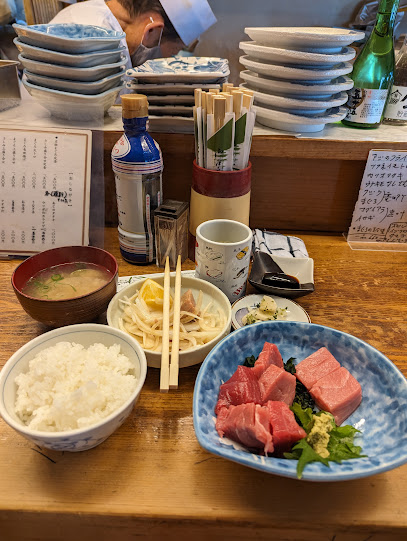
Onigajō cliff Center.
Experience authentic Mie Prefecture cuisine at Onigajō Cliff Center while enjoying breathtaking coastal views and unique souvenirs.

Sukiya R42 Kumano
Discover authentic Japanese cuisine at Sukiya R42 Kumano, where delicious meals await in a cozy family-friendly setting.

しもじ 本宮店
Indulge in authentic handmade udon noodles at しもじ 本宮店, a charming eatery nestled in Tanabe's scenic beauty.
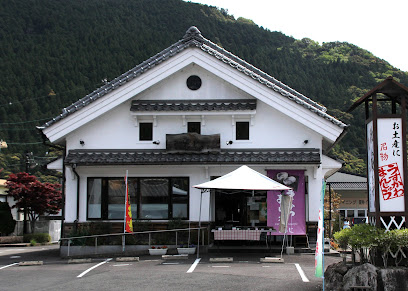
Hinoki Steak House
Experience the exquisite flavors of premium steaks at Hinoki Steak House in Nachikatsuura - where every bite is crafted with care.

ミルク&ビアホール九十九
Discover Shirahama's culinary gem at ミルク&ビアホール九十九 - A bistro where local flavors meet vibrant atmosphere.
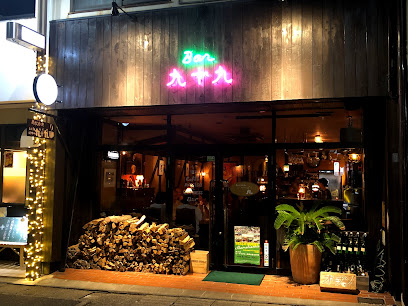
Akihei
Discover the essence of Japanese culinary art at Akihei in Tanabe - where tradition meets flavor in every exquisite dish.
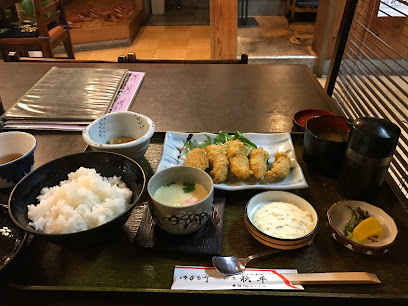
茶房珍重庵 本宮店
Discover traditional Japanese sweets and savory soba at Chabo Jinchouan in Tanabe - an authentic taste experience awaits!
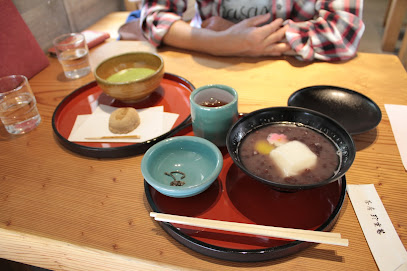
熊野のめざめ
Experience authentic Japanese cuisine at 熊野のめざめ in Nachikatsuura – where every meal tells a story of tradition and flavor.
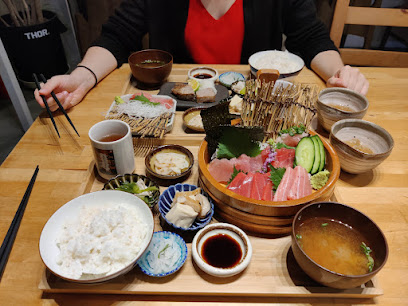
KUMANOYASAI CAFE
Discover tranquility at Kumonoyasai Cafe - where authentic flavors meet stunning nature along the Kumano Kodo pilgrimage trail.

小鳥の樹
Experience culinary bliss at 小鳥の樹 in Tanabe - where Japanese tradition meets Western flavors for an unforgettable meal.
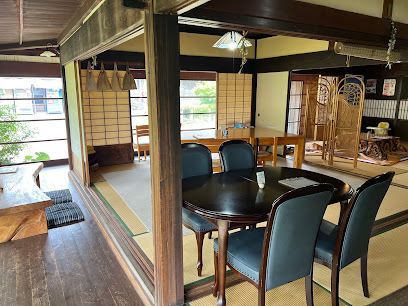
Wine Kumano
Experience the delightful fusion of local wines and exquisite cuisine at Wine Kumano in Nachikatsuura.
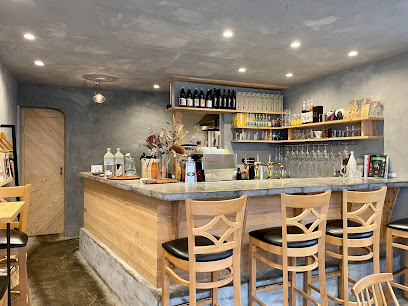
山伏そば 拝庵
Experience authentic Japanese soba noodles amidst breathtaking landscapes at Yamabushi Soba Haian in Tanabe.
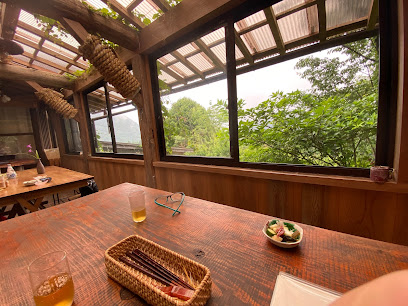
Kumano Kodo Omotenashi-Kan
Discover Kumano Kodo Omotenashi-Kan: A charming cafe offering delicious coffee and local cuisine along Japan's historic pilgrimage route.

Markets, malls and hidden boutiques
Kumano Hongu Taisha
Discover the divine beauty and rich traditions of Kumano Hongu Taisha, a sacred Shinto shrine nestled in the heart of Wakayama, Japan.
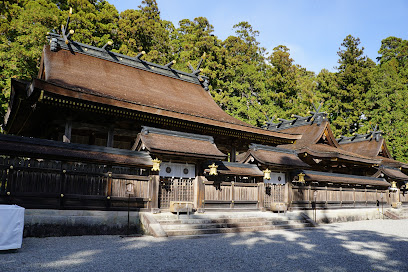
Kumano-Nachi Taisha
Discover the serene beauty and spiritual heritage of Kumano-Nachi Taisha, a must-visit Shinto shrine in Japan's stunning Wakayama mountains.
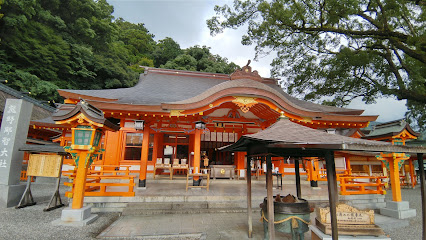
Kumano Hayatama Taisha
Discover the tranquility and spiritual heritage of Kumano Hayatama Taisha, a revered Shinto shrine in Shingu, Wakayama, Japan.
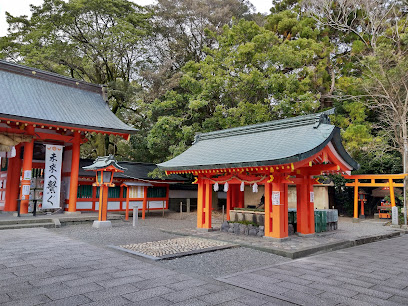
National Natural Monument Onigajō Cliff.
Explore Onigajō Cliff, a stunning National Natural Monument in Kumano, Mie, where breathtaking views and rich nature await every traveler.
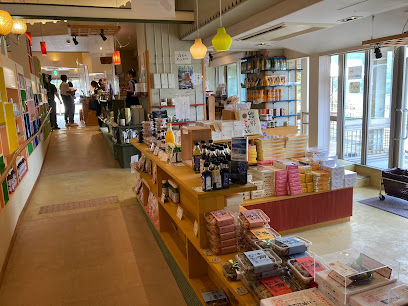
Oyunohara
Discover Oyunohara, a sacred site in Wakayama, Japan, blending history and spirituality amidst stunning landscapes and rich cultural heritage.
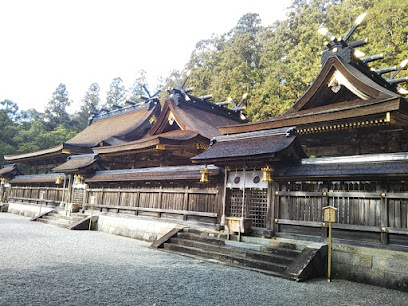
Toretore Market
Experience the vibrant Toretore Market in Shirahama, where local crafts, fresh seafood, and authentic Japanese souvenirs await every traveler.
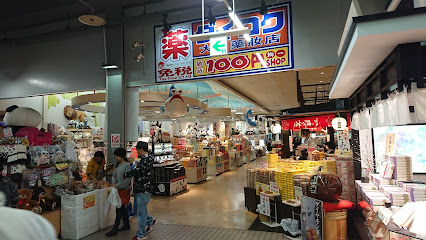
Road Station Oku-kumanokodo Hongu
Discover local flavors and beautiful scenery at Road Station Oku-kumanokodo Hongu, the ideal rest stop in Wakayama Prefecture.

Yunomine onsen Yuzutsu
Experience the serenity and healing waters of Yunomine Onsen Yuzutsu, a historic hot spring destination in Wakayama, Japan, perfect for relaxation.

Sukiya R42 Kumano
Discover the authentic taste of Japan at Sukiya R42 Kumano, where delicious beef rice bowls and comforting curries await.

Nachisan Sightseeing Center
Discover unique souvenirs and delightful treats at the Nachisan Sightseeing Center, your go-to destination in Nachikatsuura, Wakayama.

Kumano Kodo Information Center
Explore Kumano Kodo Information Center, your essential stop for discovering Japan's sacred pilgrimage trails and rich cultural heritage.
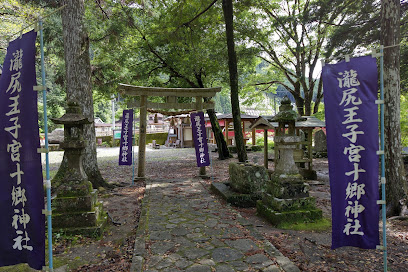
茶房珍重庵 本宮店
Discover the authentic taste of Japan at Chabou Jinchouan, where traditional sweets and soba dishes await in the heart of Tanabe, Wakayama.
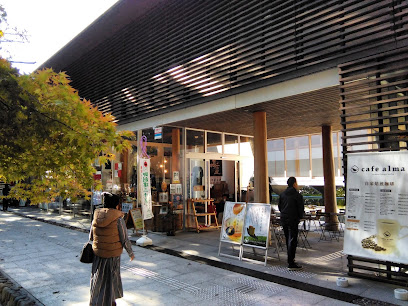
KUMANOYASAI CAFE
Discover the charm of Kumonoyasai Cafe, where fresh local flavors meet serene surroundings along the Kumano Kodo pilgrimage route.
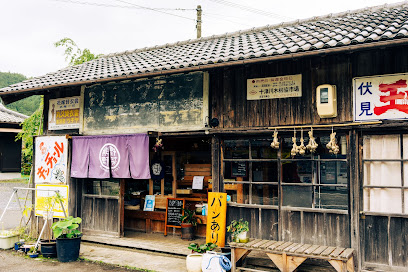
Triple Kumano Kodo JAPAN (general (corporate))
Explore local crafts and delightful souvenirs at the Triple Kumano Kodo Souvenir Store, a unique stop along Japan's historic pilgrimage route.
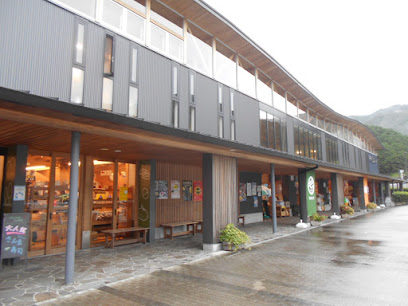
ガラス屋・茶房「靖」
Discover the beauty of handcrafted glass art and the pleasure of coffee at ガラス屋・茶房「靖」 in Tanabe, Wakayama.

Essential bars & hidden hideouts
Kumano Hongu Taisha
Discover the spiritual heart of Japan at Kumano Hongu Taisha, a historic Shinto shrine nestled in the natural beauty of Wakayama Prefecture.

Kumano-Nachi Taisha
Discover the spiritual heart of Japan at Kumano-Nachi Taisha, where ancient traditions and breathtaking nature converge.
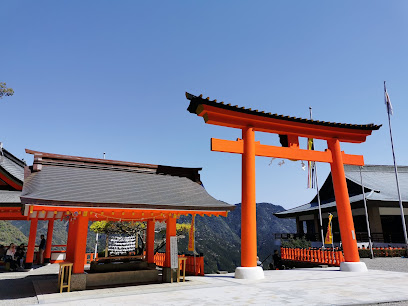
Why Kumano
Experience the perfect blend of comfort, culture, and culinary delights at Why Kumano, your gateway to the enchanting Kumano Kodo pilgrimage.
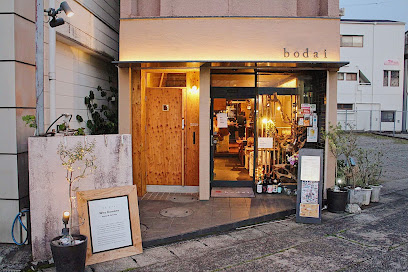
Kumano Kodo Information Center
Discover the rich heritage of Kumano Kodo at the Information Center, your gateway to ancient pilgrimage routes and stunning natural beauty.
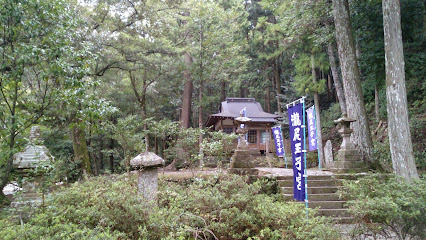
宮ずし
Experience the authentic flavors of sushi at 宮ずし in Tanabe, Wakayama - a must-visit for culinary enthusiasts and travelers alike.
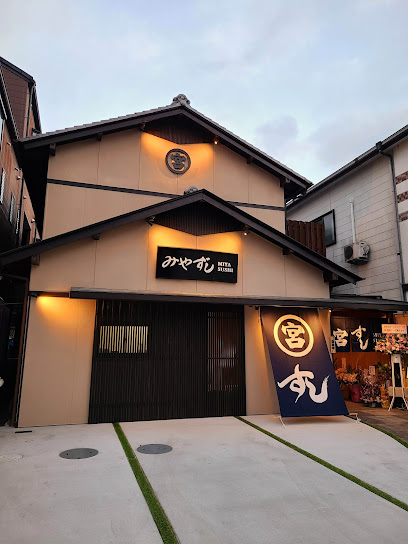
KUMANOYASAI CAFE
Discover the charming Kumonoyasai Cafe, a perfect breakfast and brunch spot on the Kumano Kodo pilgrimage trail, offering local flavors and a cozy atmosphere.
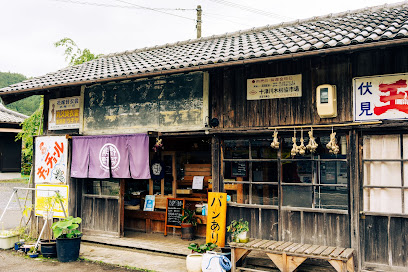
Hosshinmon-oji
Explore the serene beauty and spiritual heritage of Hosshinmon-oji Shrine, a must-visit Shinto site on the Kumano Kodo pilgrimage route.
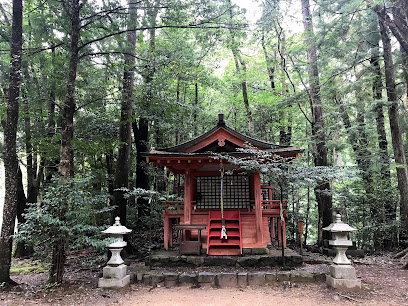
小鳥の樹
Discover 小鳥の樹, a delightful Japanized western restaurant in Tanabe, Wakayama, offering a unique blend of flavors in a serene setting.
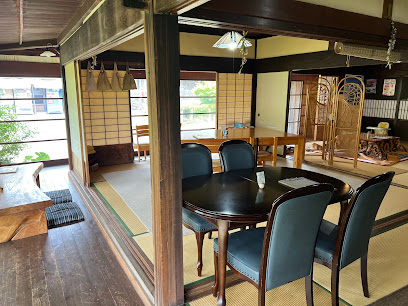
Wine Kumano
Experience authentic local cuisine and exquisite wines at Wine Kumano, a must-visit restaurant in Wakayama for food and wine lovers.
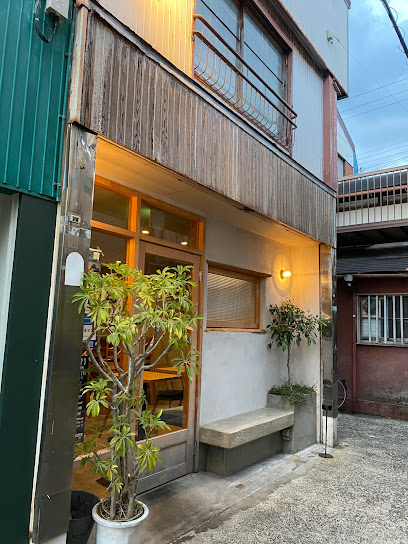
山伏そば 拝庵
Discover the authentic taste of soba noodles amidst the tranquil beauty of Wakayama at 山伏そば 拝庵.
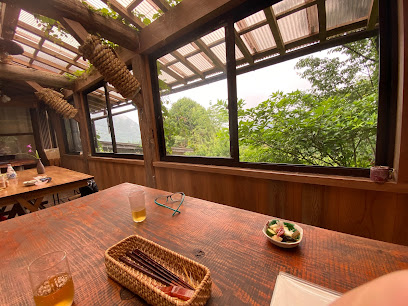
ときわや
Discover the authentic flavors of Japan at ときわや, a culinary gem in Wakayama offering traditional dishes and warm hospitality.

Kumano Winery Guest House /Dal Chef’s Table
Discover the perfect blend of relaxation, Italian cuisine, and fine wines at Kumano Winery Guest House in Wakayama.
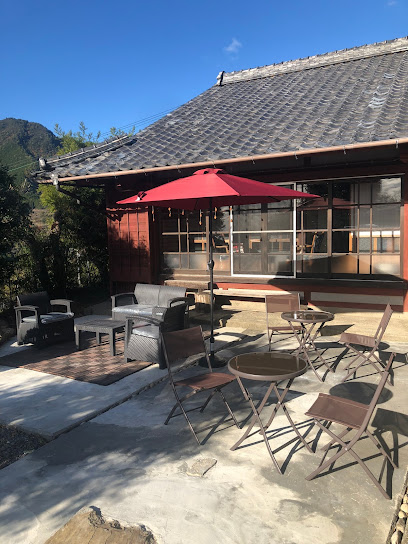
HANGOVER
Experience the taste of classic American diner cuisine at Hangover in Tanabe, where every meal is a comforting delight.
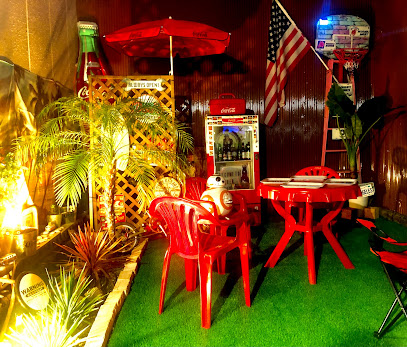
Takahara Kumano Shrine
Discover the spiritual serenity and historical significance of Takahara Kumano Shrine, a hidden gem in Wakayama, Japan.

Guest House Okagesan
Experience authentic Japanese culture at Guest House Okagesan, a budget-friendly inn in the serene landscapes of Tanabe, Wakayama.
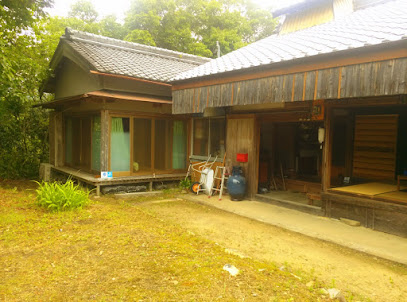
Local Phrases about Kumano Kodo
-
- Helloこんにちは
[konnichiwa] - Goodbyeさようなら
[sayonara] - Yesはい
[hai] - Noいいえ
[iie] - Please/You're welcomeどうぞ
[douzo] - Thank youありがとうございます
[arigatou gozaimasu] - Excuse me/Sorryすみません
[sumimasen] - How are you?お元気ですか?
[ogenki desu ka?] - Fine. And you?元気です。あなたは?
[genki desu. anata wa?] - Do you speak English?英語を話せますか?
[eigo o hanasemasu ka?] - I don't understandわかりません
[wakarimasen]
- Helloこんにちは
-
- I'd like to see the menu, pleaseメニューを見せてください
[menyuu o misete kudasai] - I don't eat meat肉は食べません
[niku wa tabemasen] - Cheers!乾杯!
[kanpai!] - I would like to pay, pleaseお会計をお願いします
[okaikei o onegaishimasu]
- I'd like to see the menu, pleaseメニューを見せてください
-
- Help!助けて!
[tasukete!] - Go away!去ってください!
[satte kudasai!] - Call the Police!警察を呼んで!
[keisatsu o yonde!] - Call a doctor!医者を呼んで!
[isha o yonde!] - I'm lost道に迷っています
[michi ni mayotte imasu] - I'm ill具合が悪いです
[guai ga warui desu]
- Help!助けて!
-
- I'd like to buy...買いたいです...
[kaitai desu...] - I'm just looking見てるだけです
[miteru dake desu] - How much is it?いくらですか?
[ikura desu ka?] - That's too expensive高すぎます
[takasugimasu] - Can you lower the price?値段を下げてもらえますか?
[nedan o sagete moraemasu ka?]
- I'd like to buy...買いたいです...
-
- What time is it?今何時ですか?
[ima nanji desu ka?] - It's one o'clock1時です
[ichiji desu] - Half past (10)10時半
[juuji han] - Morning朝
[asa] - Afternoon午後
[gogo] - Evening夕方
[yuugata] - Yesterday昨日
[kinou] - Today今日
[kyou] - Tomorrow明日
[ashita] - 11
[ichi] - 22
[ni] - 33
[san] - 44
[shi] - 55
[go] - 66
[roku] - 77
[nana] - 88
[hachi] - 99
[kyuu] - 1010
[juu]
- What time is it?今何時ですか?
-
- Where's a/the...?...はどこですか?
[... wa doko desu ka?] - What's the address?住所は何ですか?
[juusho wa nan desu ka?] - Can you show me (on the map)?地図で見せてもらえますか?
[chizu de misete moraemasu ka?] - When's the next (bus)?次のバスはいつですか?
[tsugi no basu wa itsu desu ka?] - A ticket (to ....)...までのチケット
[... made no chiketto]
- Where's a/the...?...はどこですか?
History of Kumano Kodo
-
The Kumano Kodo pilgrimage routes have their origins in the early Heian period (794-1185). These ancient trails traverse the Kii Peninsula and were originally used by emperors and aristocrats seeking spiritual solace and purification. The routes connect the 'Kumano Sanzan,' the three grand shrines: Kumano Hongu Taisha, Kumano Nachi Taisha, and Kumano Hayatama Taisha.
-
The Kumano Sanzan refers to the three grand shrines that are central to the Kumano Kodo pilgrimage. Kumano Hongu Taisha, the head shrine, is known for its majestic torii gate and serene riverside location. Kumano Nachi Taisha is famed for its proximity to the impressive Nachi Falls, and Kumano Hayatama Taisha is situated near the mouth of the Kumano River.
-
During the late Heian period, the pilgrimage to Kumano became highly popular among the Japanese aristocracy, including emperors and retired emperors. Emperor Shirakawa (1053-1129) is known to have undertaken the pilgrimage over 30 times, solidifying the route's importance in Japanese culture and religion.
-
Shugendo, a form of mountain asceticism, has deep roots in the Kumano region. Practitioners, known as yamabushi, would walk the Kumano Kodo routes as part of their spiritual training. The rigorous journey through rugged terrain was seen as a means of achieving enlightenment and purification.
-
The Kumano Kodo is notable for its blend of Shinto and Buddhist practices. This syncretism is evident in the architecture and rituals of the Kumano shrines, where both kami (Shinto deities) and Buddhist figures are venerated. This unique religious blend has been a hallmark of the region for centuries.
-
In 2004, the Kumano Kodo pilgrimage routes were designated as a UNESCO World Heritage Site under the category 'Sacred Sites and Pilgrimage Routes in the Kii Mountain Range.' This designation has helped preserve the cultural and historical significance of the routes, attracting pilgrims and tourists from around the world.
-
Today, the Kumano Kodo remains a popular pilgrimage destination, attracting both religious pilgrims and tourists seeking to experience its historical and natural beauty. The routes are well-maintained, with various waypoints, lodgings, and informational signs to guide travelers through the ancient paths.
Kumano Kodo Essentials
-
The Kumano Kodo pilgrimage routes are located in the Kii Peninsula of Japan. The nearest international airports are Kansai International Airport (KIX) in Osaka and Nanki-Shirahama Airport (SHM). From Kansai International Airport, you can take a train to Kii-Tanabe or Shingu Station. The journey usually takes around 2.5 to 3.5 hours, depending on the train. From Nanki-Shirahama Airport, it's about an hour's drive to Tanabe. Bus services are also available to the starting points of the pilgrimage routes.
-
Once in the region, public buses and trains are the primary modes of transportation. The Kii Peninsula is well-connected with a network of local buses that serve the pilgrimage routes. Japan Railways (JR) operates trains that can take you to the main access points of the Kumano Kodo. For those who prefer flexibility, renting a car is also an option, but be prepared for narrow and winding roads. Walking is, of course, the most traditional and immersive way to experience the pilgrimage routes.
-
The official currency in Japan is the Japanese Yen (JPY). Credit cards are widely accepted in larger cities and tourist areas, but it's advisable to carry cash, especially in rural areas like the Kii Peninsula. ATMs are available at convenience stores and post offices, but not all of them accept foreign cards. It’s a good idea to withdraw sufficient cash before heading into more remote areas.
-
The Kii Peninsula, including the Kumano Kodo routes, is generally very safe for tourists. Crime rates are low, and violent crime is rare. However, it's always good practice to stay vigilant, especially in crowded places and when handling your belongings. There are no specific high-crime areas targeting tourists in this region. Be cautious of natural hazards like sudden weather changes, as the terrain can be challenging.
-
In case of an emergency, dial 110 for police and 119 for fire and medical services. The region has several medical facilities and clinics, but they may be spread out, so it's wise to know the nearest location in advance. Carry a basic first aid kit and any necessary personal medications. Familiarize yourself with basic Japanese phrases for emergencies or have a translation app handy.
-
Fashion: Do wear comfortable and appropriate clothing for hiking. Avoid overly casual or revealing attire when visiting religious sites. Religion: Do show respect at shrines and temples. Bow slightly and follow purification rituals where applicable. Public Transport: Do be punctual and quiet on public transport. Don't talk loudly or use your phone. Greetings: Do greet people with a slight bow. Handshakes are less common but acceptable. Eating & Drinking: Do try local foods and accept offerings graciously. Don't eat while walking or in public places not designated for eating.
-
To experience Kumano Kodo like a local, consider staying at traditional ryokan inns and trying local onsens (hot springs). Engage with locals, who are often very hospitable and willing to share stories about the region's history. Visit local markets for fresh produce and unique souvenirs. Don’t miss the chance to attend local festivals if your visit coincides with one, as they offer a vibrant glimpse into local culture and traditions.
Trending Landmarks in Kumano Kodo
-
Nachi Waterfall
-
Kumano Hongu Taisha
-
Kumano-Nachi Taisha
-
National Natural Monument Onigajō Cliff.
-
Daimon Gate
-
Oyunohara
-
Akagi Castle Ruins
-
Tsubo-yu
-
丸山千枚田
-
Fudarakusan-ji
-
Nyonin-do Hall
-
Yoshino Kumano National Park
-
Kumano Kodo - Nakahechi Daimon-saka Pilgrim Route
-
Kumano Kodo Information Center
-
Koguchi shizen-no-ie
Nearby Cities to Kumano Kodo
-
Things To Do in Nara
-
Things To Do in Kyoto
-
Things To Do in Nagoya
-
Things To Do in Kanazawa
-
Things To Do in Hiroshima
-
Things To Do in Tokyo
-
Things To Do in Fukuoka
-
Things To Do in Ulsan
-
Things To Do in Gyeongju
-
Things To Do in Busan
-
Things To Do in Pohang
-
Things To Do in Daegu
-
Things To Do in Andong
-
Things To Do in Suncheon
-
Things To Do in Daejeon













